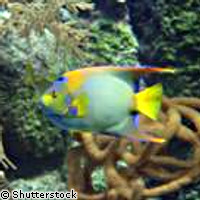LIFEWATCH designs biodiversity data infrastructure
Developing a Europe-wide research infrastructure on biodiversity is the ambitious goal of the recently-started LIFEWATCH project. The infrastructure will enable the exchange and linking of biodiversity data, the development of online analysis tools and the creation of virtual laboratories in EU Member States. Ultimately, the project partners hope their approach will contribute to better managing the environment and halting the loss of biodiversity. Up until now, biodiversity data-sharing among countries, organisations and disciplines has been fragmented, resulting in large spatial and temporal gaps in data coverage. This denies large-scale analytical and modelling developments that benefit from these resources. Helping to plug the gaps has been the Global Biodiversity Information Facility (GBIF). This is an international network of countries set up to make scientific data on biodiversity available via the Internet. However, although the facility has made great strides in making interoperable databases accessible to the public, it has had to depend on the services of data providers. Targeted collective action, therefore, is the only feasible solution to tackling these issues, say the partners of LIFEWATCH. Together, they aim to construct and bring into operation the facilities, hardware and software and governance structures needed to create a biodiversity research infrastructure. The infrastructure will comprise networks for data generation and processing; facilities for data integration and interoperability; and virtual laboratories with analytical and modelling tools. A Service Centre for users to promote research opportunities is also foreseen. The new infrastructure is expected to open up new areas of research and new services by providing access to the large data sets from different (genetic, population, species and ecosystem) levels of biodiversity, together with analytical and modelling tools. Although ambitious and costly, the project comes at an opportune time and will prove viable in the long run, the project partners believe. Ultimately, the programme will fuel both the economic and life quality interests of society, they say. More specifically, LIFEWATCH, which will run for a period of 15-20 years, will contribute to the better conservation and management of nature, as well as the development of land use planning, environment assessment and environmental monitoring. Participating in this initiative are executives and representatives of 8 scientific networks in the field of biodiversity, 18 national governments, and foreign partners and contacts, and academia.



